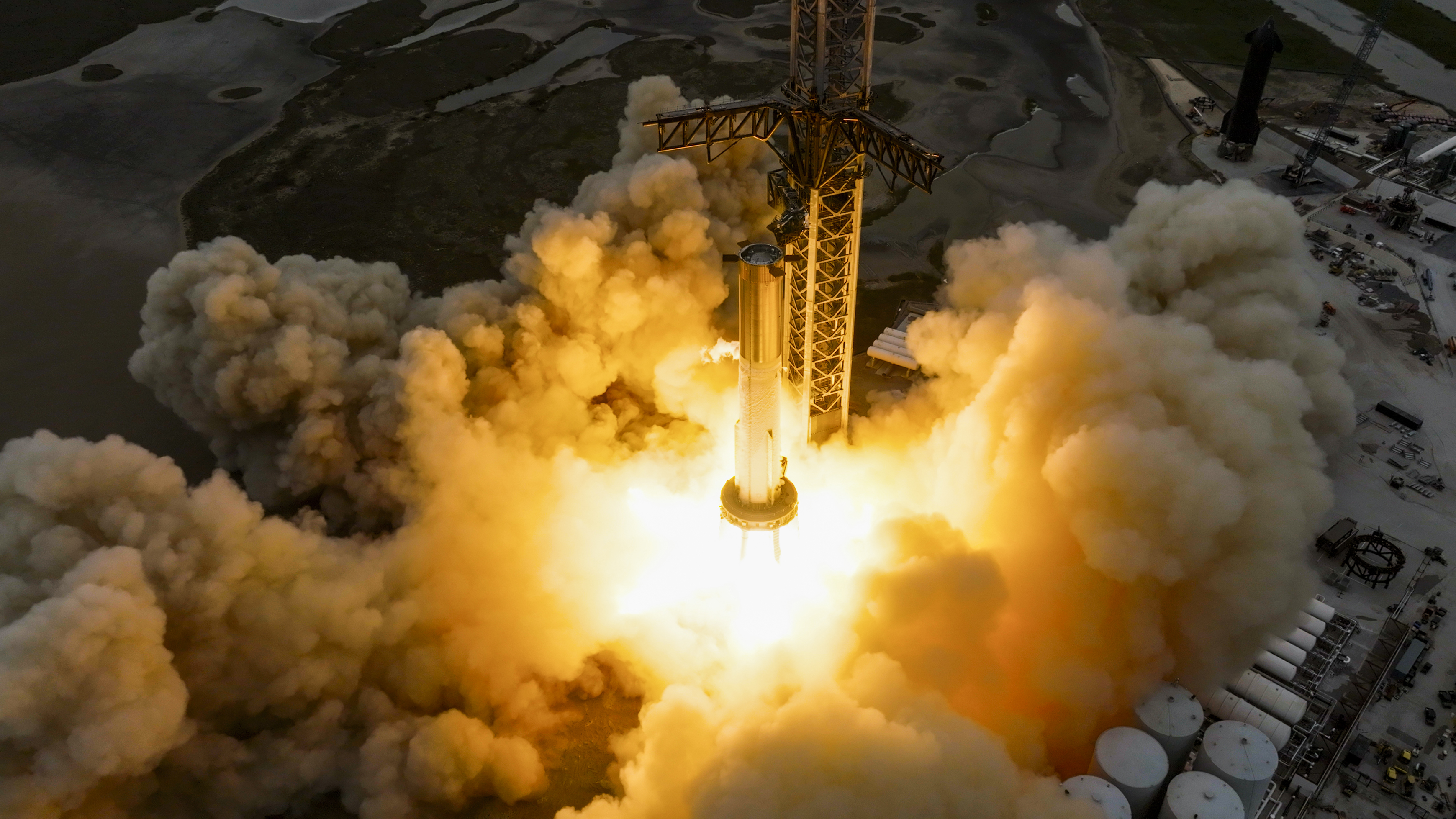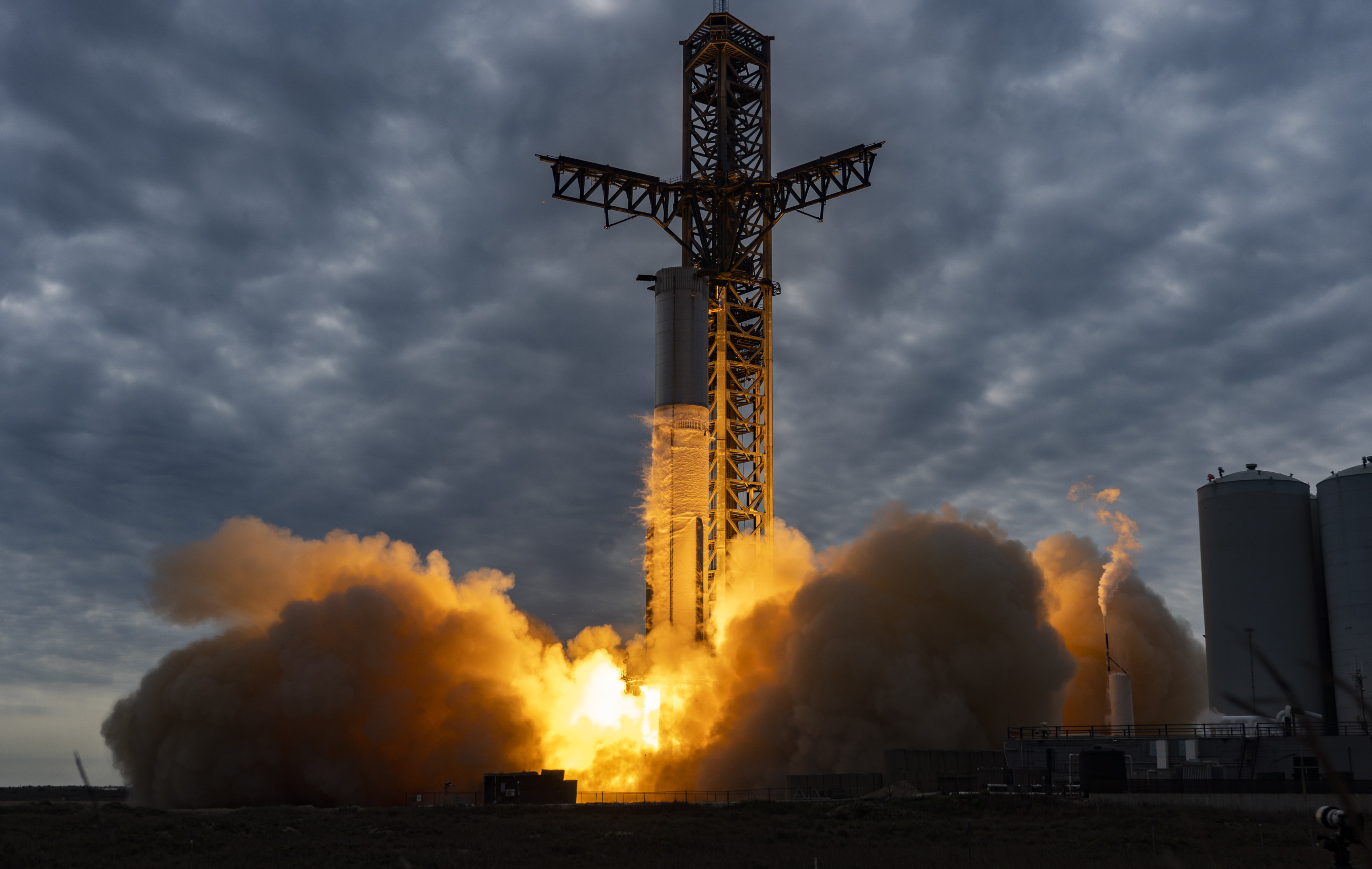Relive SpaceX Starship's epic 31-engine burn with these photos

Dramatic new photos commemorate a milestone moment on SpaceX's planned journey to Mars.
SpaceX plans to help humanity get a foothold on the Red Planet with its next-generation Starship vehicle, which consists of a giant first-stage booster called Super Heavy and a 165-foot-tall (50 meters) upper-stage spacecraft known (somewhat redundantly) as Starship.
Both of these elements are designed to be fully reusable, and both are powered by SpaceX's new Raptor engine — 33 for Super Heavy and six for Starship.
Related: SpaceX's huge Starship booster conducts historic 31-engine burn (video)

SpaceX is gearing up for the first-ever orbital flight test of a Starship vehicle, one that will involve the Booster 7 Super Heavy prototype and an upper-stage variant called Ship 24.
SpaceX has put both of the vehicles through multiple "static fire" tests at its Starbase facility in South Texas, briefly lighting up their engines while they remained anchored to the ground. All six of Ship 24's Raptors blazed up on Sept. 8, 2022, for example, and Booster 7 ignited 14 of its 33 engines two months later.
That remained the static-fire high for Booster 7 — until Thursday. On that day, SpaceX aimed to engage all 33 engines and fell just short; the team switched one Raptor off just before ignition and another turned itself off, company founder and CEO Elon Musk said in a Thursday tweet.
Breaking space news, the latest updates on rocket launches, skywatching events and more!
"But still enough engines to reach orbit!" the tweet reads, in part.

Those 31 Raptors put on quite a show during their roughly seven-second burn, as you can see in the new photos, which SpaceX tweeted out on Friday. But the engines are capable of even greater things.
"Super Heavy Booster 7 completed a full duration static fire test of 31 Raptor engines, producing 7.9 million lbf of thrust (~3,600 metric tons) — less than half of the booster's capability," SpaceX wrote in the Friday tweet.
For perspective: NASA's Space Launch System became the most powerful rocket ever to fly successfully on Nov. 16, 2022, when it sent the agency's uncrewed Orion capsule skyward on the Artemis 1 moon mission. During that liftoff, the SLS generated 8.8 million pounds of thrust.
SpaceX still needs to perform some checkouts with Booster 7 and Ship 24. If everything goes well with those remaining tests, the duo could launch on the orbital flight test as early as next month, Musk has said.
Mike Wall is the author of "Out There" (Grand Central Publishing, 2018; illustrated by Karl Tate), a book about the search for alien life. Follow him on Twitter @michaeldwall. Follow us on Twitter @Spacedotcom or on Facebook.

Michael Wall is a Senior Space Writer with Space.com and joined the team in 2010. He primarily covers exoplanets, spaceflight and military space, but has been known to dabble in the space art beat. His book about the search for alien life, "Out There," was published on Nov. 13, 2018. Before becoming a science writer, Michael worked as a herpetologist and wildlife biologist. He has a Ph.D. in evolutionary biology from the University of Sydney, Australia, a bachelor's degree from the University of Arizona, and a graduate certificate in science writing from the University of California, Santa Cruz. To find out what his latest project is, you can follow Michael on Twitter.
